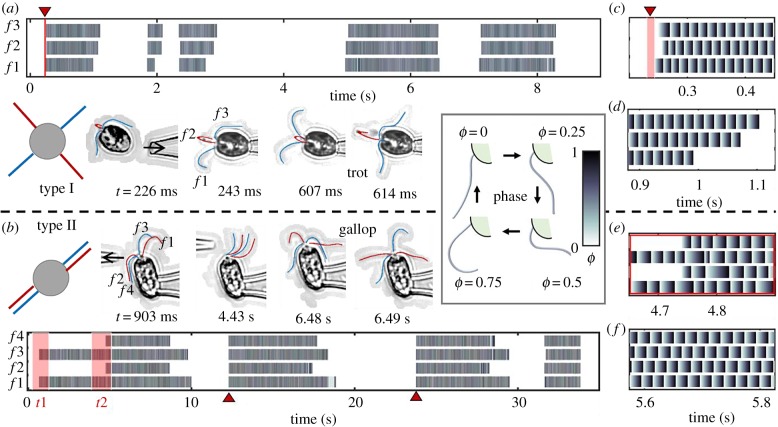Figure 4.
Reversible rhythmogenesis and gait mechanosensitivity in quadriflagellates. (a) The four flagella of P. parkeae have a cruciate arrangement (type I, top view). The captured cell has two flagella in the focal plane (f 1,3) and two others moving transversely—these are labelled as f 2 and are tracked as one (see electronic supplementary material, video S6). (b) The four flagella of T. suecica have an anti-parallel arrangement (type II, top view). Mechanical perturbations are introduced at times t1,2, and spontaneous shocks are detected at times indicated by red pointers. (c–f) are zoomed-in plots of (a,b), at time points of interest. At the moment of capture, the flagella begin to beat, but not simultaneously; a regular trot gait emerges within three beat cycles (c). Spontaneous termination of beating does not occur at the same time in all flagella (d). Induced changes in locomotor patterning (e) are compared with the regular phase patterning (f) observed during the trotting gait. (See electronic supplementary material, video S7.) Inset: flagellar phase is defined according to progression through the beat cycle.

